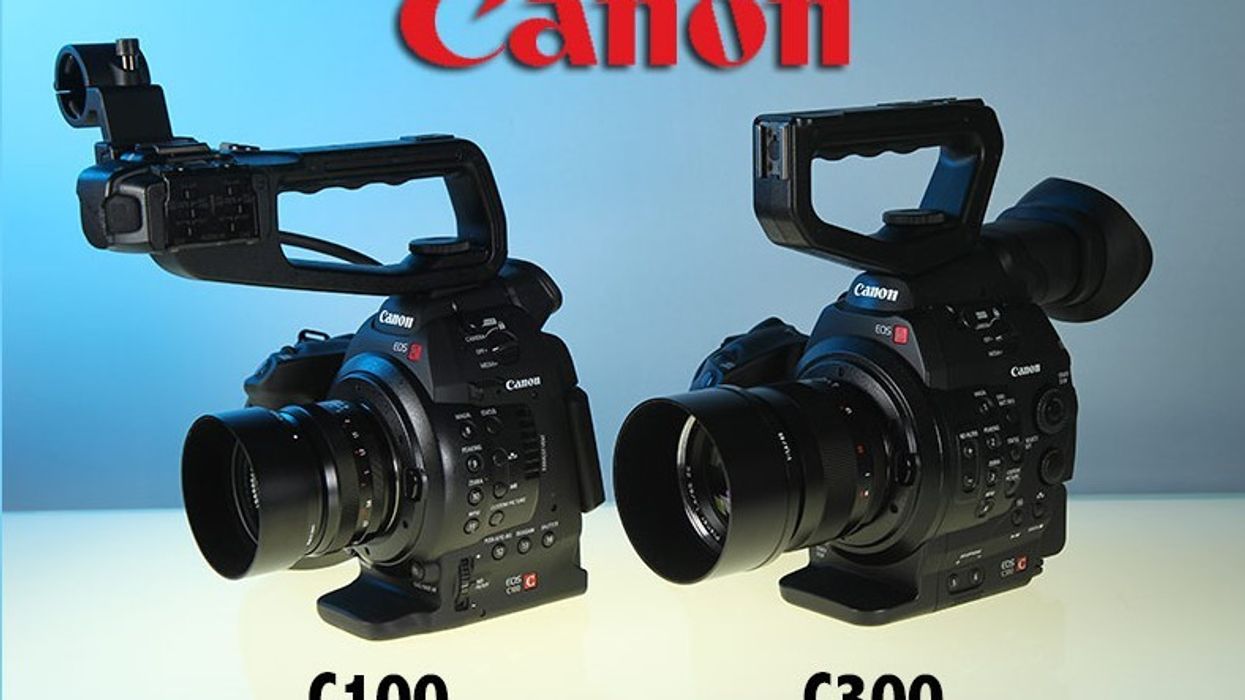Which is the Better Value, Canon C100 or C300? Plus a Short Film Scene Shot with the C100

This camera seems to be getting as much vitriol in the comments on this website as the Canon 1D C, but the Canon C100 also has its share of defenders. It might not be priced perfectly considering the features, but it's a camera that should just work out the box without much fuss, and Canon has made some key changes compared to the C300 that might be a deal-breaker for some, but well worth the cost-savings for others. I've said quite a bit about where I think this camera can fit in, but don't take my word for it, here is Philip Johnston with his review (which is also available for download):
Obviously Canon didn't have many options on where to put the LCD since they decided to shrink the camera down, but I think since the viewfinder on the back isn't great according to most reviewers, a loupe attached to the LCD is probably going to be a great option for getting critical focus (you thought you left those behind on your DSLR, huh?). I really think this is almost a perfect incognito documentary camera for low-light situations. Even though it doesn't already have a broadcast codec built-in, an external recorder should really be able to fix that without adding too much cost to the rig.
Speaking of external recorders, Ryan Emanuel, who frequents the site, has been testing the C100, and used a Hyperdeck Shuttle to record ProRes 4:2:2 HQ. Here is a little bit of his process, and the scene below:
It was shot handheld but on a wooden camera rig.
2 Sennheiser EW 100s hooked up to the xlr ins
Zeiss ZE 35mm 1.4 50mm Makro and 85mm 1.4
I used Canon log, I feel it gives by far the best results for narrative. In my CP, I adjust the white balance point 5 Magenta and 1 Blue. I think that though the c100 can mathematically white balance, it still has a green tint to it, but you can fix it. Canon log is preset at -10 on the sharpness, I turned that up a bit, and added a little color saturation in the darks, thats where the camera struggles a little bit.
I graded in davinci resolve but for the most part the look was derived in lighting.
This is some of the better looking footage that I've seen out of the C100, and if it wasn't already clear to me before, it's definitely clear now: this camera can and will be used for narrative work. With a few modifications, you can basically get all of the benefits of the C300, and save a few dollars in the process. It's not clear what differences there are internally between the C100 and the C300, but at almost half the price, the C100 does most of what its higher-priced sibling can do -- except for the missing slow motion options (even though with a little work it's technically possible to somewhat replicate a 60p look using the 1080 60i setting in the camera).
Just to put it into perspective a bit, here is a comparison between the Sony EX1, Canon 5D Mark II, and the C100:
The EX1 is still a $6,000 camera, and even though it does include a few more options like a built-in lens and 10-bit 4:2:2 out of the HD-SDI port, internally it's recording to a similar (or worse, depending) 35mbps 4:2:0 codec, and only does 720p 60fps. Just a few years ago this was one of the best 1080p cameras around for the money, but it's clear that there are many more advantages to having a large sensor, especially for cinematic purposes.
What do you think of the cinematic possibilities of the C100? Do you think we're spoiled because of so many low-cost cameras with large sensors in this price range? While they are aimed at totally different markets, what do you think about the fact that the EX1 is priced around the C100? Has any of the footage above changed your mind about the $6,500 C100?
Links:
[via Notes On Video]
















